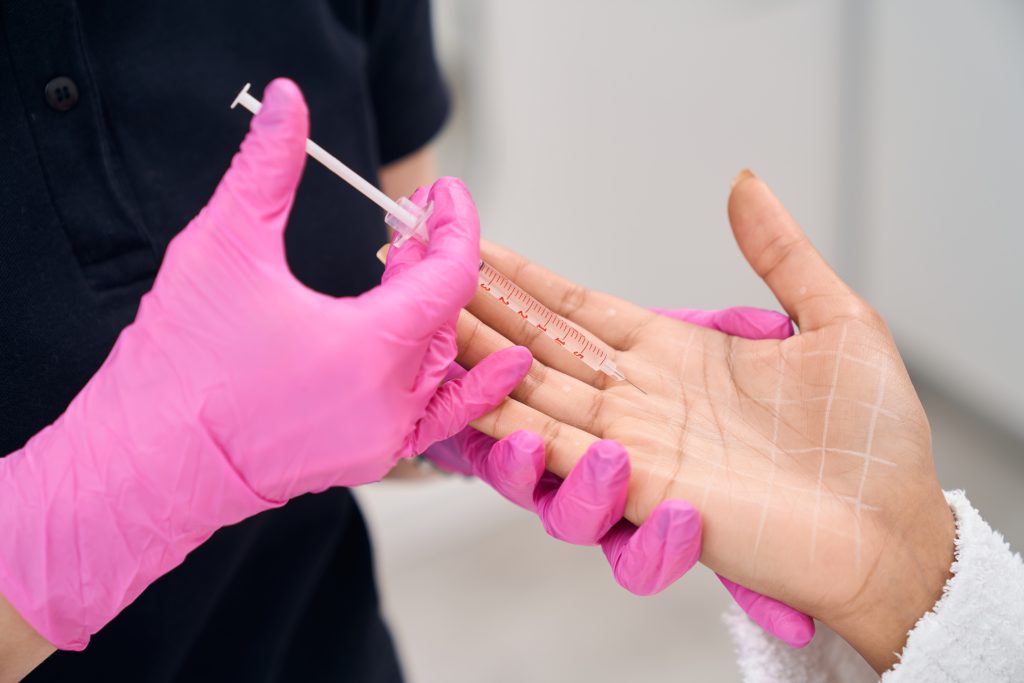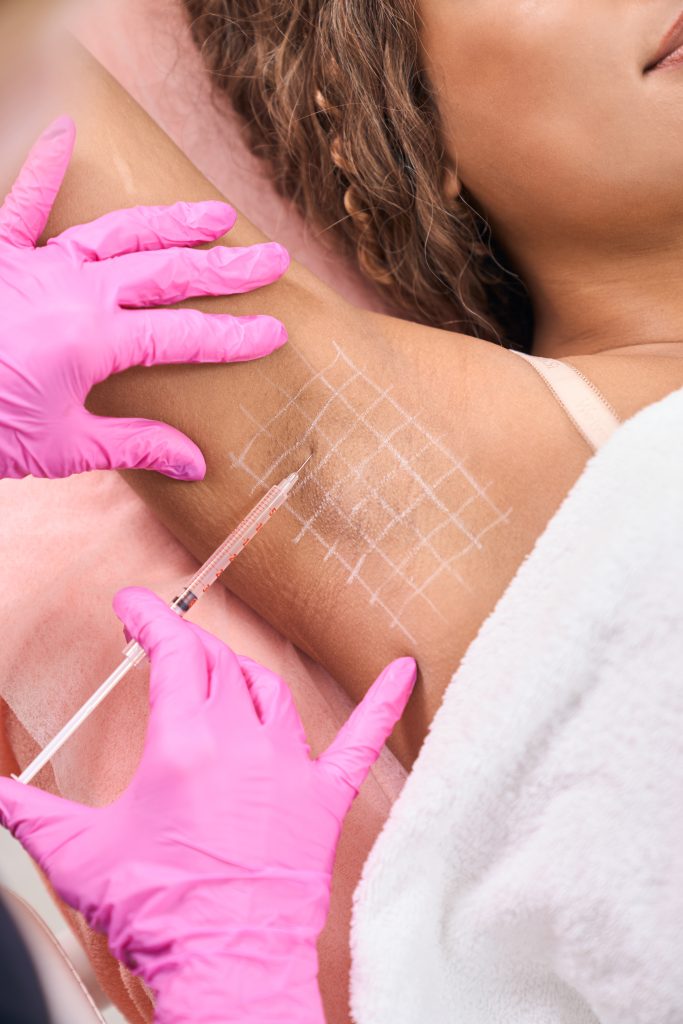Excessive sweating (hyperhidrosis)
Excessive sweating, known as hyperhidrosis, can lead to the body perspiring more than necessary, even without any clear cause. This condition is not uncommon and may result in discomfort or embarrassment. Seeking guidance from a healthcare professional will enable you to find treatment options to address its symptoms, which may involve using specific antiperspirants, medication, or therapy.

What is excessive sweating?
Excessive or unmanageable perspiration, also referred to as hyperhidrosis, can be extremely disconcerting and humiliating, yet it is a prevalent condition.
Approximately 3 out of every 100 Australians experience abnormal perspiration, wherein they sweat profusely without any discernible cause, even when they are not experiencing heat or engaging in physical exertion. Those affected by this condition may perspire to an extent where it saturates their clothing.
If you have hyperhidrosis and it is causing you distress, there are remedies available to alleviate the negative effects of excessive perspiration on your daily life.
There are 2 types of excessive sweating:
- Focal hyperhidrosis refers to excessive sweating concentrated primarily on the feet, hands, face, head, and underarms. This condition typically begins during childhood and it is found that around 30 to 50 percent of individuals experiencing this type of hyperhidrosis have a genetic predisposition to excessive sweating.
- Generalized hyperhidrosis refers to an excessive sweating condition that impacts the entire body, typically stemming from an underlying medical issue.
What Causes Hyperhidrosis?
While some cases of hyperhidrosis can be attributed to neurological, endocrine, infectious, or other systemic conditions, the majority occurs in individuals who are generally in good health. While heat and emotions can cause hyperhidrosis in some cases, many people with hyperhidrosis experience excessive sweating throughout the day, regardless of their mood or the weather.
Hyperhidrosis Symptoms
The symptoms you may have due to hyperhidrosis will depend on the part of your body where you experience it. Generally, these symptoms include:
- Too much perspiration on your palms, hands, underarms, face, and torso.
- Certain individuals might encounter a significant reddening of their facial skin.
What methods do dermatologists use to diagnose hyperhidrosis?

In order to identify this state, a skin specialist conducts a physical evaluation on the individual. This involves carefully examining the areas of the body that experience excessive perspiration. The dermatologist also poses highly specific inquiries to gain insight into the underlying causes of the patient’s profuse sweating.
There are occasions when medical testing is essential, such as conducting the sweat test on certain patients. This procedure entails applying a powder to their skin, which changes color to purple once it becomes wet.
Additional medical tests may be required in order to discover a hidden medical condition.
Hyperhidrosis treatment therapies
If the symptoms persist despite attempting to treat them at home and using medication, your healthcare provider may suggest more specialized forms of therapy.
- Antiperspirants that are prescribed are formulated with aluminum chloride hexahydrate.
- Glycopyrronium wipes with anticholinergic properties for topical use.
- Botox injections, which involve injecting botulinum toxin into an excessively active nerve, can cease sweat production for several months. It is essential to have recurring treatments.
- Iontophoresis is a method that involves applying electric current to pass ionized tap water through the skin.
- Microwave therapy, known as miraDry®, involves using a sophisticated device placed on the affected area of the skin to emit heat energy. This heat energy permanently eliminates sweat glands. This treatment is conducted in a healthcare provider’s office and typically takes about one hour to complete.
- miraDry is a procedure that utilizes microwave energy to eliminate sweat glands in a permanent manner.
- Lasers possess the ability to specifically focus on and eliminate the sweat glands located in the underarms.

Hyperhidrosis surgery
If other remedies prove ineffective and your symptoms continue, your healthcare professional may contemplate the option of undergoing surgery.
- Endoscopic thoracic sympathectomy (ETS) is a surgical procedure that involves the minimal invasion approach, wherein a surgeon severs a nerve in the body to disrupt the signal instructing sweat glands to produce sweat.
- Sweat gland elimination: A medical professional will use a laser, scraping (curettage), cutting (excision), or liposuction to remove your sweat glands.
Surgery can provide long-term advantages for excessive sweating that does not improve with other treatments. Consult with your surgeon regarding potential risks and complications of the surgery to determine if it is suitable for you.
When can I expect to start feeling better after receiving treatment?
After starting treatment, you might experience immediate relief or it could take several weeks to months before you see improvements in your symptoms. The timeframe for each treatment option differs, and your healthcare professional can inform you about the expected outcomes for each option.
At what time should I contact my healthcare provider?
Contact the healthcare professional if you experience:
- Symptoms that do not improve or deteriorate.
- Signs of a skin infection
- When sweat is accompanied by chest pain, difficulty breathing, or a rapid heartbeat
- Sweating during sleep
- Other new symptoms
Treatment in Türkiye:
The medical staff of surgical teams, doctors, and consultants at REHABTÜRK can provide the best treatment options and free consultations, striving to stay up-to-date on the latest medical technologies and methods.
